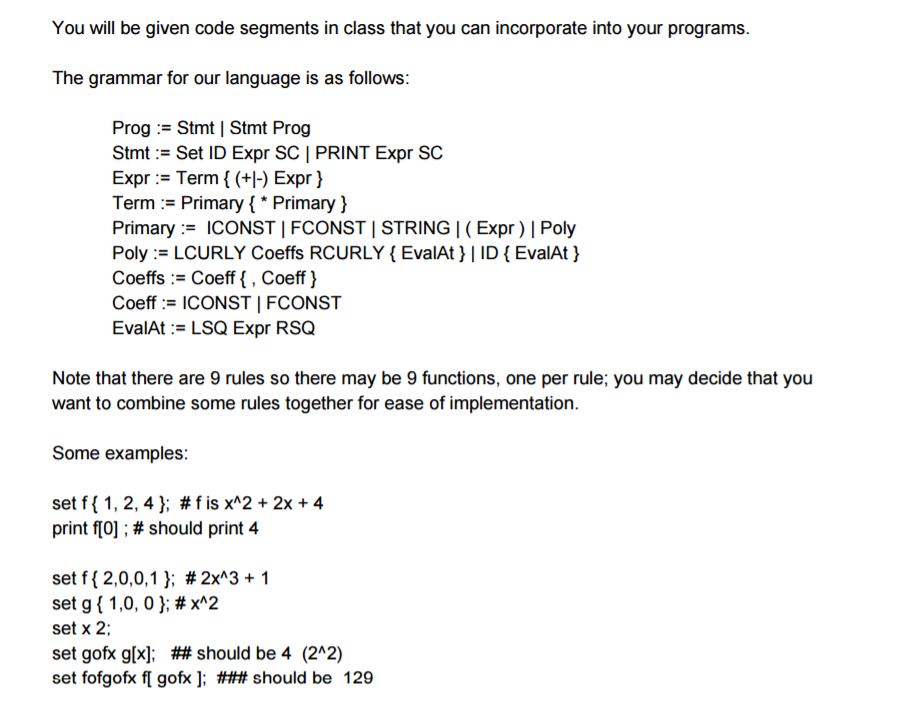Question
HOW CAN I FIX THIS CODE TO MATCH THE GRAMMER PROVIDED /* * ParseNode.cpp * */ #include ParseNode.h // We want to use our getToken
HOW CAN I FIX THIS CODE TO MATCH THE GRAMMER PROVIDED
/* * ParseNode.cpp * */
#include "ParseNode.h"
// We want to use our getToken routine unchanged... BUT we want to have the ability // to push back a token if we read one too many; this is our "lookahead" // so we implement a "wrapper" around getToken
static bool pushedBack = false; static Token pushedToken;
Token GetToken(istream& in) { if( pushedBack ) { pushedBack = false; return pushedToken; }
return getToken(in); }
void PutBackToken(Token& t) { if( pushedBack ) { cout
pushedBack = true; pushedToken = t; }
// handy function to print out errors void error(string s) { cout
// Prog := Stmt | Stmt Prog ParseNode *Prog(istream& in) { ParseNode *stmt = Stmt(in);
if( stmt != 0 ) return new StatementList(stmt, Prog(in)); return 0; }
// Stmt := Set ID Expr SC | PRINT Expr SC ParseNode *Stmt(istream& in) { Token cmd = GetToken(in);
if( cmd == SET ) { Token idTok = GetToken(in); if( idTok != ID ) { error("Identifier required after set"); return 0; } ParseNode *exp = Expr(in); if( exp == 0 ) { error("expression required after id in set"); return 0; } if( GetToken(in) != SC ) { error("semicolon required"); return 0; }
return new SetStatement(idTok.getLexeme(), exp); } else if( cmd == PRINT ) { ParseNode *exp = Expr(in); if( exp == 0 ) { error("expression required after id in print"); return 0; } if( GetToken(in) != SC ) { error("semicolon required"); return 0; }
return new PrintStatement(exp); } else PutBackToken(cmd); return 0; }
ParseNode *Expr(istream& in) { return 0; }
ParseNode *Term(istream& in) { return 0; }
// Primary := ICONST | FCONST | STRING | ( Expr ) | Poly ParseNode *Primary(istream& in) { // check tokens... or call Poly return 0; }
// Poly := LCURLY Coeffs RCURLY { EvalAt } | ID { EvalAt } ParseNode *Poly(istream& in) { // note EvalAt is optional return 0; }
// notice we don't need a separate rule for ICONST | FCONST // this rule checks for a list of length at least one ParseNode *Coeffs(istream& in) { return 0; }
ParseNode *EvalAt(istream& in) { return 0; }

Step by Step Solution
There are 3 Steps involved in it
Step: 1

Get Instant Access to Expert-Tailored Solutions
See step-by-step solutions with expert insights and AI powered tools for academic success
Step: 2

Step: 3

Ace Your Homework with AI
Get the answers you need in no time with our AI-driven, step-by-step assistance
Get Started


